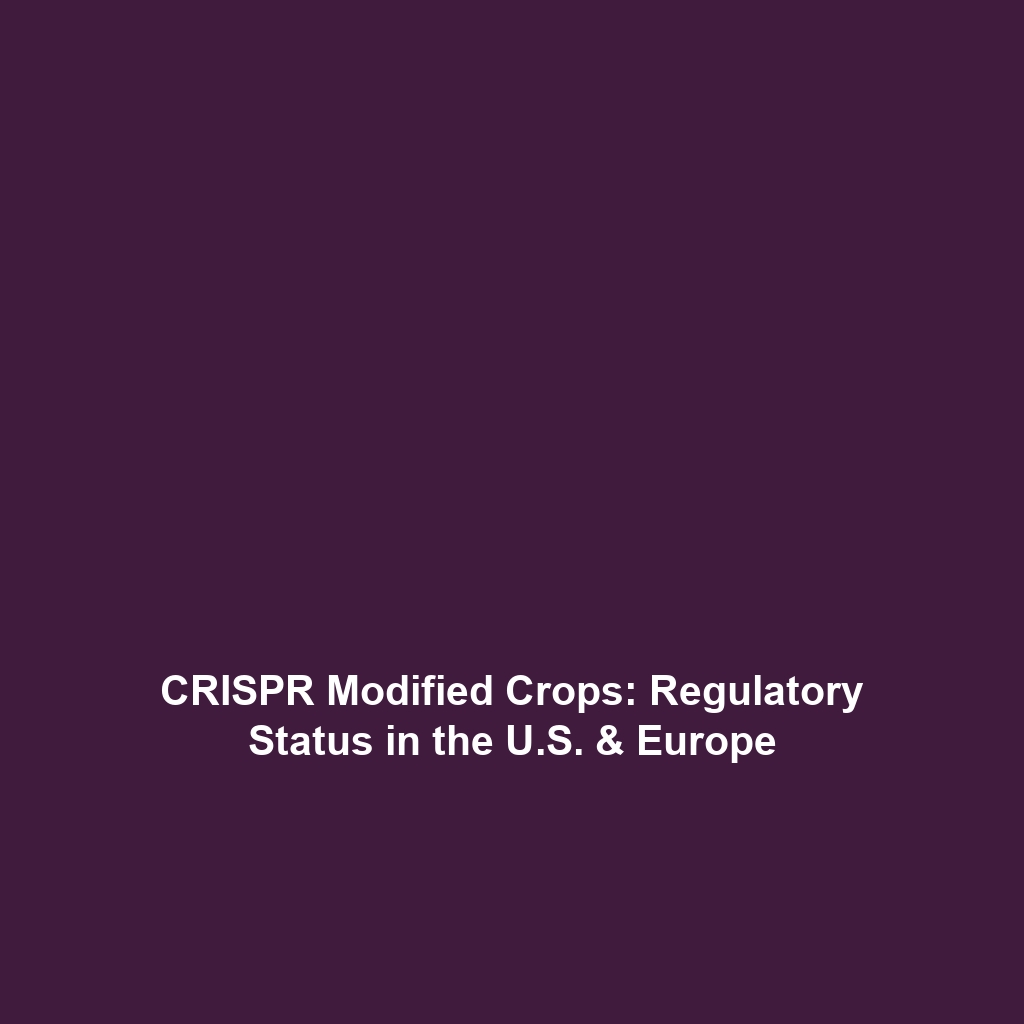Safety Concerns Related to Unintended Genetic Changes and Long-Term Consequences in CRISPR Gene Editing
In recent years, CRISPR gene editing has revolutionized biotechnology, providing the ability to edit genes with unprecedented precision. However, safety concerns related to unintended genetic changes and long-term consequences have become a focal point of research and debate. Understanding these implications is vital for the responsible advancement of CRISPR technology, as potential risks could affect both individuals and ecosystems. This article explores the significance, applications, challenges, and future of safety concerns within the context of CRISPR Gene Editing.
Key Concepts of Safety Concerns in CRISPR Gene Editing
CRISPR technology enables scientists to target and alter DNA sequences, but unintended genetic changes can occur. Here are key concepts surrounding safety concerns:
1. Off-Target Effects
One major concern is the potential for off-target effects where CRISPR unintentionally alters unintended regions of the genome. This can lead to unpredictable consequences, including genetic disorders or cancer.
2. Mosaicism
Mosaicism refers to the presence of genetically different cells within a single organism. This phenomenon can complicate the outcomes of CRISPR treatments, leading to uneven distribution of edits that may have long-term effects on health.
3. Epigenetic Changes
CRISPR not only alters genetic code but can also affect epigenetic markers. These changes can influence gene expression without altering the underlying DNA sequence, posing risks of unintended long-term consequences.
Applications and Real-World Uses
Understanding safety concerns related to unintended genetic changes is crucial for the following applications:
1. Therapeutic Uses in Medicine
CRISPR is being explored for treating genetic diseases, such as sickle cell anemia and cystic fibrosis. Safety evaluations are essential to prevent unintended mutations that could worsen patient conditions.
2. Agricultural Biotechnology
The agricultural sector utilizes CRISPR for developing disease-resistant crops. Addressing safety concerns ensures that these alterations do not adversely affect biodiversity or crop health in the long run.
Current Challenges
Despite promising applications, several challenges and limitations hinder the safe use of CRISPR:
- Research Limitations: Current methodologies may not fully capture all off-target effects.
- Regulatory Hurdles: Striking a balance between innovation and safety is complex, with regulatory frameworks still evolving.
- Public Perception: Misinformation and fear surrounding genetic editing can impede progress and acceptance of CRISPR technologies.
Future Research and Innovations
Future research efforts are directed towards minimizing safety concerns associated with CRISPR:
1. Improved Targeting Techniques
Newer CRISPR versions, such as CRISPR/Cas9 variants, aim to enhance specificity and reduce off-target effects greatly, contributing to safer genetic modifications.
2. Ethical Considerations and Guidelines
Ongoing dialogues concerning ethics will shape policies governing CRISPR use, ideally leading to innovations that prioritize safety and public trust.
Conclusion
Safety concerns related to unintended genetic changes and long-term consequences pose significant challenges in the realm of CRISPR Gene Editing. Addressing these issues is critical for harnessing the full potential of this transformative technology. As research continues, it is essential for scientists, regulators, and the public to engage in open discussions about these safety concerns to ensure responsible use. For further reading on genetic editing technologies and their implications, explore our articles on genetic therapies and CRISPR advancements.


